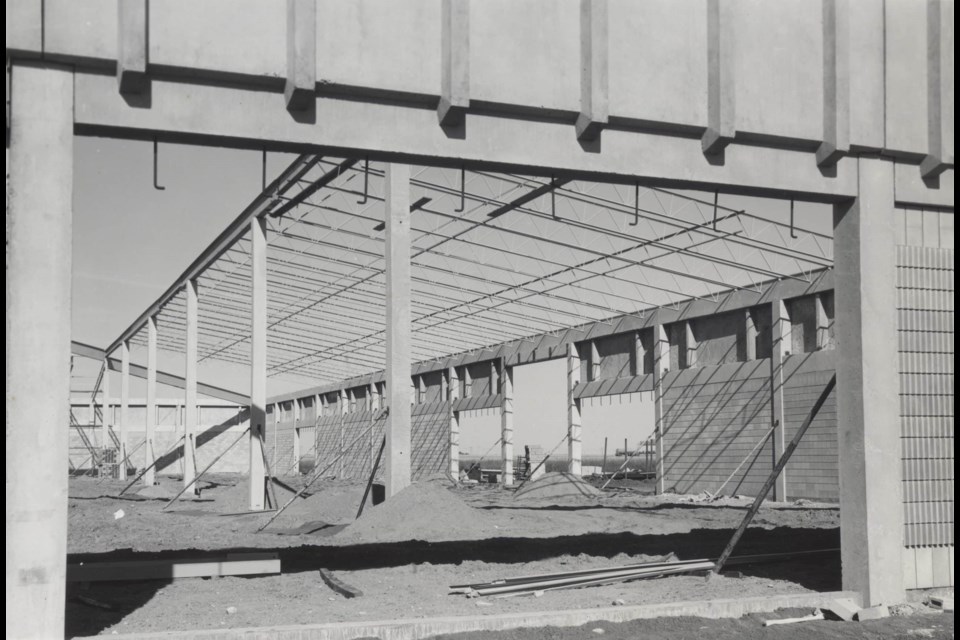The Western Development Museum (WDM) is now celebrating 75 years in Saskatchewan, and to mark the occasion, a recent Virtual Coffee Club presentation explored the museum’s history in the province.
Virtual Coffee Clubs are part of the museum’s ongoing programming and explore numerous topics in depth through each free Zoom-based virtual presentation.
The April 18 presentation was led by Alexis Jones, the program and volunteer co-ordinator at Moose Jaw’s branch of the WDM.
The history of the WDM began at a time when the world was at war. During the Second World War, the Canadian government made it illegal to possess more than 227 kilograms of scrap metal and possessing steel in any amount required a permit. The fine for disobedience was $5,000 or up to five years’ imprisonment.
As a result, several old farm machines started to disappear from across the province.
“The disappearance of these old machines did not go unnoticed,” Jones said. “In 1942-43, members of the (Battlefords Northwest Historical Society) began to discuss the need for the machines to be preserved.”
The committee was led by W.C. Wells, a farmer and contractor, Evan Hardy, the dean of agriculture at the University of Saskatchewan, and Joe Phelps, a farmer and member of the Saskatchewan Legislature who was minister of natural resources and industrial development at the time.
In 1946, Phelps secured a $10,000 provincial grant to start an agricultural museum in The Battlefords.
More room to store artifacts was soon needed, and by 1947 the group quickly found themselves running out of space.
To make use of available structures, former Royal Canadian Air Force (RCAF) hangar number seven was acquired and repurposed as a storage facility. This began the process of converting several other empty hangars into museum facilities.
With so much inventory coming into the museum’s collection, it was time to keep a definitive record and by Dec. 11, 1947, the WDM recorded its first entry in a succession register.
The first-ever recorded artifact was a 15-horsepower International Harvester gas-powered engine, and in 1973, the WDM was one of the first museums in Canada to join a national program of computerized artifact record keeping.
As inventory continued to amass, a storage and restoration site was opened in Saskatoon at the corner of Dutchess Street and Ninth Avenue. Later, in 1951, the former British Commonwealth Air Training Plan (BCATP) hangar number 35 located in Swift Current was dismantled and transported to Saskatoon.
April 1949 was a busy time for the WDM. On April 2, 1949, the Western Development Museum Act was given royal assent and the WDM was officially created. On April 28, the first annual provincial grant was received in the amount of $16,000.
In 1973, a $1 million government grant was secured for the construction of a new WDM location in Moose Jaw covering 10,405 square metres and focusing on transportation.
A sod-turning ceremony took place in Moose Jaw on May 9, 1974, using a steam engine and plow. Later, on June 26, 1976, Moose Jaw’s branch of the WDM was declared open with then-Saskatchewan Premier Allan Blakeney officiating the ribbon cutting ceremony.
On April 15, 2000, the WDM officially welcomed its 10 millionth visitor since opening to the public in 1949.
The WDM has had numerous distinguished guests across its four locations including Canadian Prime Minister Pierre Elliot Trudeau, Governor Generals, and members of the British Royal Family including Queen Elizabeth II and her husband, Prince Philip.
Today, the WDM holds more than 75,000 artifacts along with more than 500,000 archival photographs and other library materials held in trust for Saskatchewan’s current and future residents.
To learn more about the history of the WDM, you can view the museum’s timeline at WDM.ca.
The 75th Anniversary Timeline presentation can be viewed on the museum’s YouTube channel under ‘WDM Coffee Club.’
For more information, Alexis Jones can be reached at 306-693-5989 or by email at [email protected].




